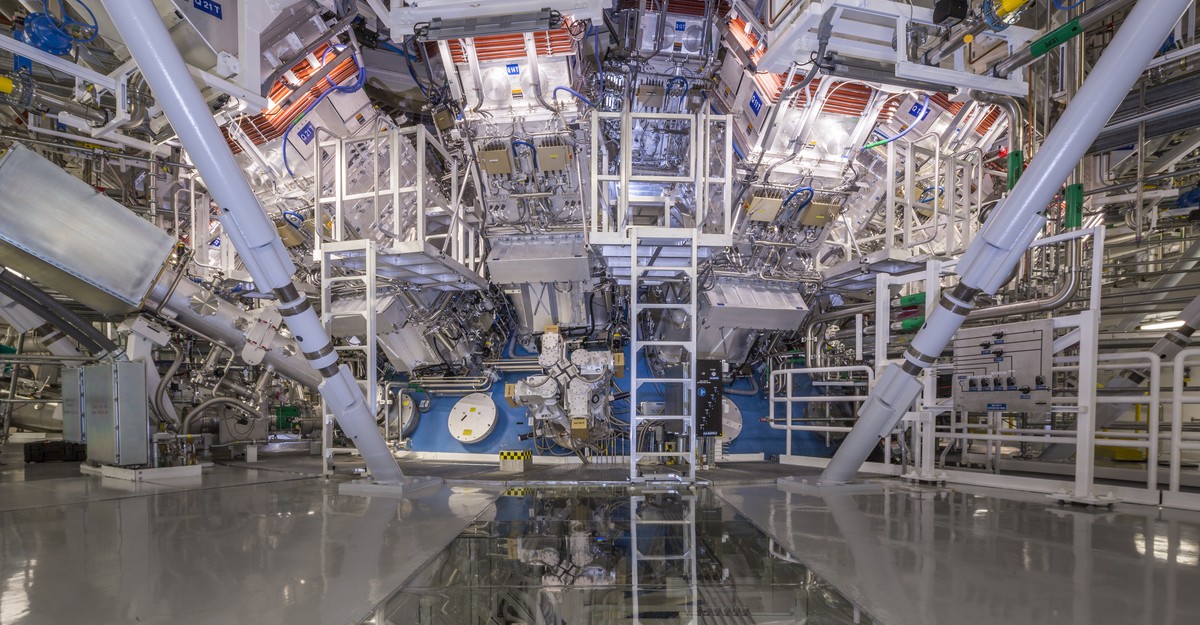The report of this so called 'breakthrough' came from people who are well versed in obscuring key details because they work in the secret environment of a nuclear weapons laboratory, Lawerence Livermore National Laboratory (LLNL). Within it is the National Ignition Facility (NIF) giant laser building which has always been primarily funded to study thermonuclear weapon (H-bomb) fuel-compression and other thermonuclear weapon's dynamics. The reported experiment was actually part of that function. Material samples were placed next to the fuel capsule to test their reaction to the intense pulse of 14 Mev fusion neutrons that were generated by the reported experiment.
The reported input energy quantity may not have been from the lasers but instead a measure of the fraction of X-rays that ended up compressing the extremely expensive, nearly perfectly spherical, hollow diamond fuel capsule. The fusion energy production lasted about 0.08 nanoseconds. Since it took about a week to prepare the shot the duty cycle of this shot, over a one-week period, would be around 0.0000000000000002. It was finally admitted by the NIF staff that the energy needed to charge up the lasers was over 100 times greater than that used as the input reference energy to the compress the the fuel capsule. During the exceedingly brief reaction about 4% of the once frozen deuterium/tritium (D/T) fuel mixture actually 'burned' with the remaining ending up as radioactive waste coating the interior of the vacuum vessel that required cleaning out before another experiment could be performed.
The lab employs their own definition of 'ignition' that is different than most people idea of ignition. Most people equate it with something like a match head striking a rough surface where the initial reaction spreads to the rest of the fuel in about two seconds. In the NIF inertial confinement experiment (ICF) the extremely compressed core of the fuel pellet, which was in the form of a 150 million kelvin plasma, started the fusion reaction then blew off the other 96% of the fuel before it could participate in the reaction. The fusion reaction is totally dependent upon the energy contained within the laser beams and the compressing X-rays that are generated from those beams. During the blast from the laser beams the entire expensive target assembly turns into an intensely hot plasma.
The multibillion dollar National Ignition Facility (NIF) lasers achieved full power in 2009 and the experimenters were expected to achieve its namesake goal of 'ignition' by 2012. It failed by a wide margin but the funding kept flowing from the U.S. nuclear weapons program budget.
I've followed the fusion energy experiments since the early 1970s with its usual claims that a practical fusion power reactor will likely only be 20-30 years away, touted by the experimenters and their fans. They often state that the power source is virtually unlimited since the fuel can be obtained from seawater. The fact is that tritium is extremely rare, extremely expensive and radioactive, having a half-life of about 12 years. There are enormous problems needed to be overcome for future fusion reactors to breed their own tritium fuel from a lithium isotope. The intense energy 14 Mev neutrons, generated by the fusion reactions, will degrade the structures around them and will render some of their atoms radioactive via the process of neutron activation reactions. The usual claims of fusion producing clean energy without creating radioactive waste is pure deceptive sales hype. Most nuclear fusion physicists agree that Magnetic Confinement Fusion (MCF) experimental approaches are far more likely to lead to a practical fusion power plant design. Still that is likely to take well over a single decade. Scaling that up to displace our addiction to fossil fuel based energy resources will take more decades. Those people, who continue to believe that nuclear power will save us, have to be masterful at excluding the following warnings from their consciousness.
IPCC report: ‘now or never’ if world is to stave off climate disaster
Greenhouse gas emissions must peak by 2025, say climate scientists in what is in effect their final warning

www.theguardian.com
UN chief: World has less than 2 years to avoid 'runaway climate change'
António Guterres, the United Nations secretary general, told global leaders this week that the world has less than two years to avoid “runaway climate change.”“If we do not change course by 20…

thehill.com
* This statement was made 4-years ago.
Here is another critical review of the recent experiment and the ITER situation. When most journalists look for critical balance in their articles, on topics such as this, they tend to defer to those experts who have vested interest in the technology, or have long been fans of it.
Is This the ‘Kitty Hawk Moment’ for Fusion Energy?
This week’s big news amounts to a symbolic achievement—and symbols matter.

www.theatlantic.com
ITER is a showcase … for the drawbacks of fusion energy
Fusion still continues to need much more energy than it produces, consumes huge quantities of water, and may not be able to scale up because there may not be enough tritium. And that’s just for starters.

thebulletin.org
ITER Newsline
KEY COMPONENTS TO BE REPAIRED
21 Nov. 2022
When building a machine as large and as complex as ITER, difficulties and setbacks do not come as surprises—they are an integral part of manufacturing, assembl[...]
www.iter.org








